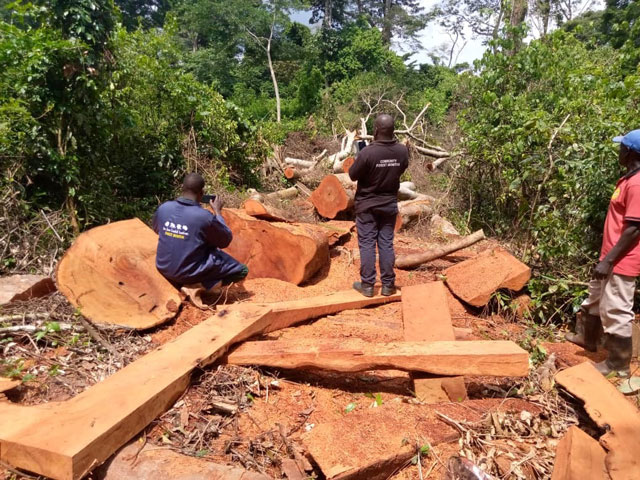
Ongo communal forest becomes another victim of the COVI-19 pandemic; a case of custodians becoming destroyers
COMMENT | Daniel Abowe | The Ongo communal forest in western Uganda is shared by four villages of Ogadra, Kibali, Onieni, and Abangi in Kasenene parish, Budongo sub-county, Masindi district.
In 2017, ECO-TRUST supported the Ongo Communal Land Association (CLA to become the first communal forest to receive a land title in Uganda, under sustainable management and protection of the Ongo community.
This was done to promote sustainable use of natural resources within the Albertine landscapes amidst human activities such as oil and gas exploration, development, and production. This was also prompted by the provisions in the Land Act of 1998: Sect 15-23 (Government of Uganda, 1998) which provided for community expression of interest in managing forests formally on public land.
Ongo CLA was formally registered in 2003 as a Community Based Organisations (CBO) and its boundary was surveyed and mapped in 2007 with support from Budongo Forests Community Organisation (BUCODO). The management committee and their roles and responsibilities and mechanisms for dispute resolution were clearly defined. The constitution and forest management plan were also formulated.
Why Ongo is important
Over the years, the Ongo CLA has achieved great milestones with support from other conservation Non-Governmental Organizations such as the Jane Goodall Institute, Wildlife Conservation Society, and Community Development Conservation Agency.
Ongo communal forest is strategically located in the Bugoma-Budongo conservation corridor which connects private forests between the two central forests in greater Hoima and Masindi districts respectively.
Its value to the continued conservation of the corridor can’t be overemphasized. Like any other part of the Albertine region biodiversity hotspot, Ongo community forest is known for species diversity and species richness.
Wildlife such as chimpanzees and other primates use this forest as a habitat, but also to migrate from one area to another. The forest is also a catchment for rivers such as Waki, Nyampunu, Elio, and Twanga which provides water to a big number of households in the region. Its destruction will reduce livelihoods for the neighboring communities who get non-timber forest products, carry out bee keeping, eco-tourism, and the long-awaited benefits of REDD+ such as carbon money and REDD+ strategic options.
Being destroyed from within
The only remaining community forest within the area is however being destroyed. All fingers point at the would-be custodians (management committee and other stakeholders) as the community watch with no means of deterring these illegal activities.
The role of the district technical staff including the district forest officer, natural resources officer, environment officer, and CLA management committee are all now in the spotlight.
The COVID-19 pandemic is believed to have far-reaching negative effects on conservation in many places as attention is elsewhere. It’s therefore not coincidental that the perpetrators have taken advantage of the prevailing COVID-19 situation and the preventive measures to benefit from this communal forest.
According to the forest monitoring team, Ongo communal forest management committee hasn’t held any general meetings for the last four years which is leading to mismanagement of the resource.
The team reported that the committee sold more trees to loggers in the pretext of raising funds to install a rice milling machine which is yet to be installed.
The destruction of the forest will ruin conservation efforts from different institutions especially under the Northern Albertine Rift Conservation Group (NARCG).
It is therefore paramount that the district technical officers do monitoring to assess the level of damage of this community forest.
It’s also necessary that involved parties be thoroughly cautioned to ensure that they are transparent and accountable in their CLA forest management actions. A review of the management plan through the general assembly is also imperative to ensure the continued conservation of the remaining forest.
*****
 Daniel Abowe is a researcher at ACODE/CSCO
Daniel Abowe is a researcher at ACODE/CSCO
 The Independent Uganda: You get the Truth we Pay the Price
The Independent Uganda: You get the Truth we Pay the Price


